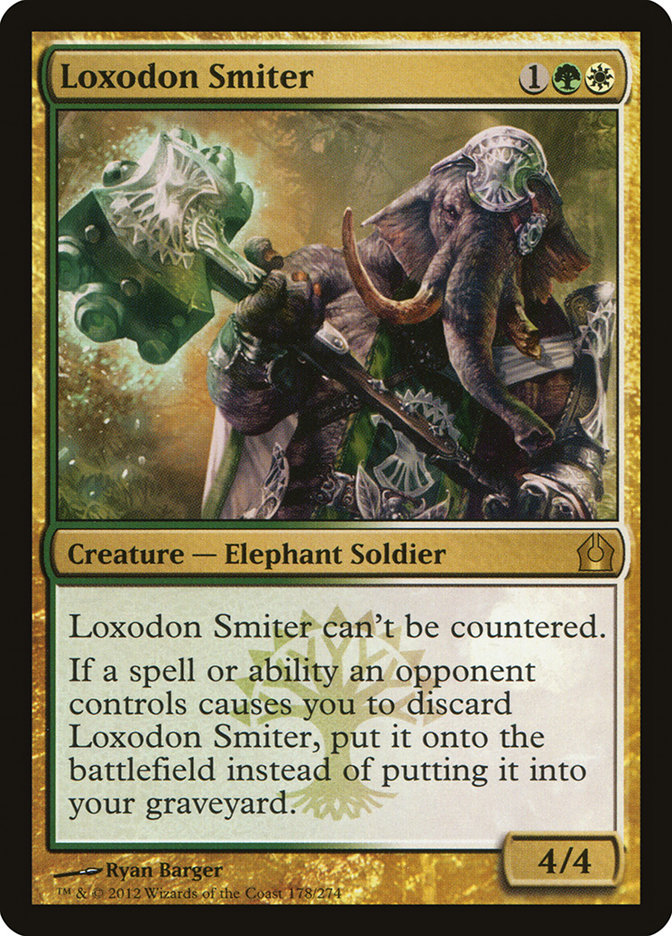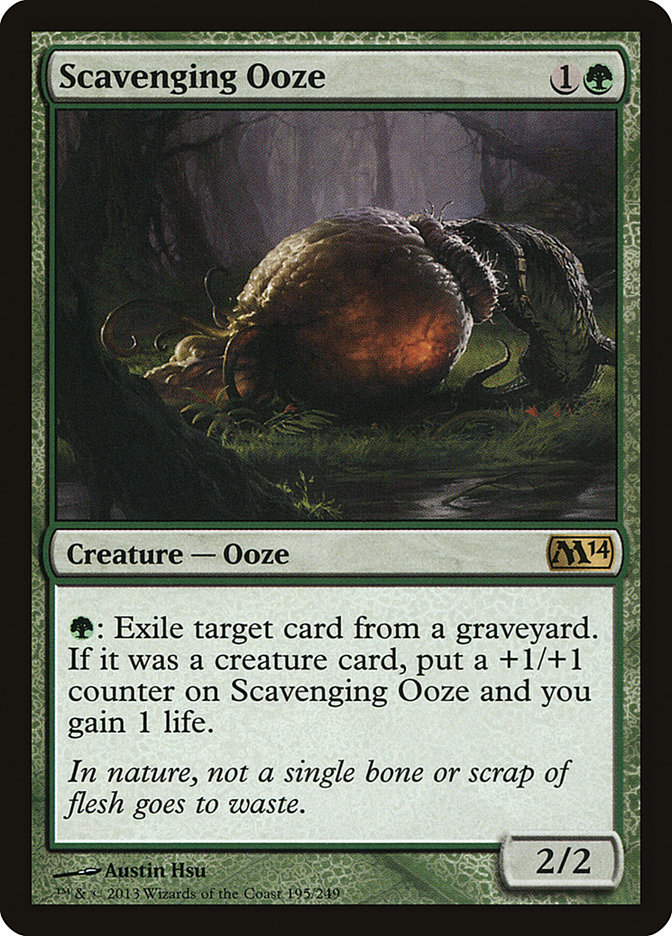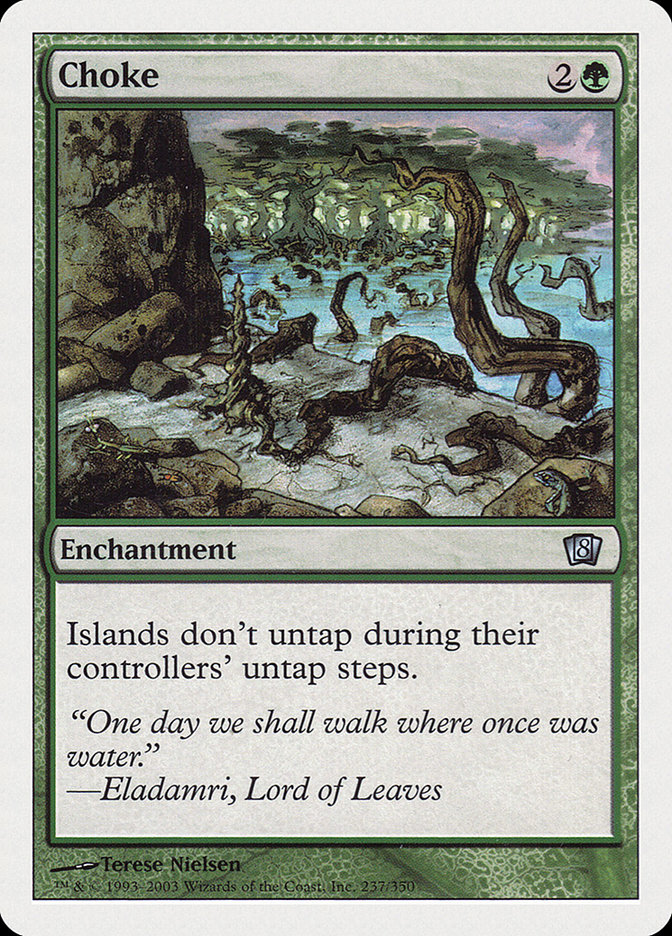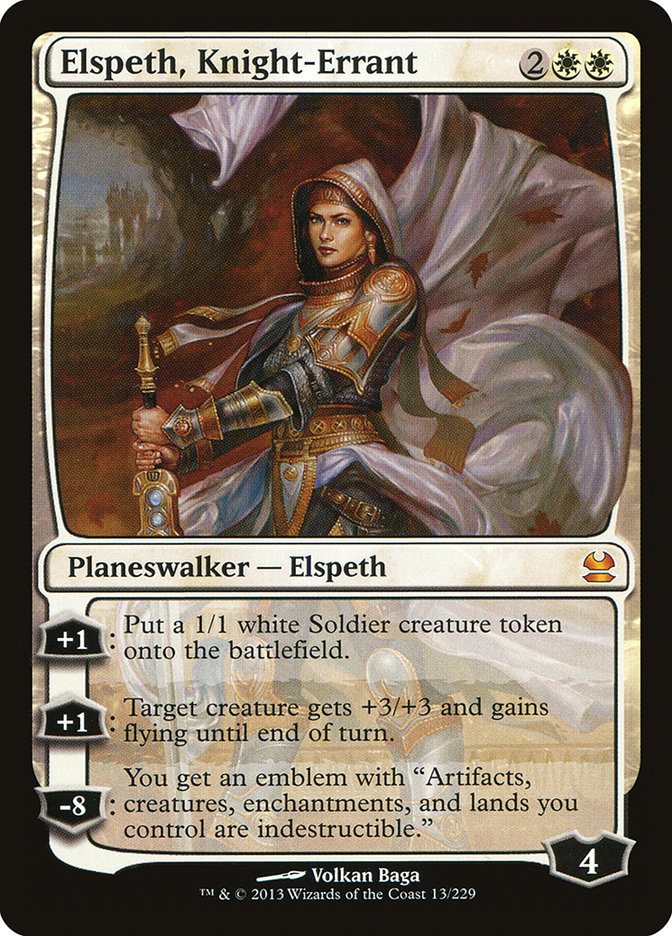Years ago, when I was young, I had big plans of being a writer. While I certainly didn’t imagine myself as a Magic strategy writer on the Internet—since neither Magic nor the Internet were things that existed back then, at least to my knowledge—I did have designs of making a living putting pen to paper. My mother, who was always very encouraging about anything I showed great interest in, gave me a box inscribed with my initials and a Mark Twain quote, and I still have it to this day:

I may not be a writer in the sense that I thought I would be way back then, but those words stay with me. And they’re not just about writing either. Twain is really just expressing a much more elegant version of “close only counts in horseshoes and hand grenades.” And it applies to Magic too.
While the Standard rounds of the World Championship went very well for me, the Modern rounds did not. I lost two incredibly close matches to Craig Wescoe and Ben Stark to put me out of contention for Top 4, and then lost to Yuuya Watanabe when I managed to get the only game loss in the history of the new World Championship format when I failed to desideboard because I was so frustrated by the new tiebreaker rule making the final round absolutely meaningless.
When I got back home after Worlds, I saw a number of people being very critical of my deck choice, claiming that it was a poor decision for the field. I found that analysis pretty amusing considering the circumstances. I may have gone 0-3 in played matches, but the matches themselves were very close despite a great deal of poor fortune on my part. In my match against Ben Stark, I mulliganed four times in three games and managed to win game 1 despite him resolving four copies of Cryptic Command throughout the game.
The problem wasn’t that my deck was fundamentally bad but rather that I had made the wrong read on the metagame. I didn’t anticipate nearly as much U/W/R and thought Jund and Pod would be much more popular than they turned out to be. I figured some people would show up with U/W/R, but I certainly did not expect it to be half the field. My experience playing against U/W/R in previous events with decks that were at least relatively similar told me that cards like Sword of War and Peace and Thrun, the Last Troll were incredibly difficult for them to beat, but the biggest contingent of U/W/R decks in the tournament had Hallowed Burial to nullify Thrun’s biggest strength.
My deck was just a lightning bug, but in a slightly different world, it could have been lightning.
It’s been interesting to see the results of Modern events in the wake of Worlds. The top of the pack actually looks much more like what I anticipated the Worlds field looking like. In the recent Magic Online Championship Series, Bing Luke won his third straight MOCS invite with Melira Pod, overcoming a mirror match in the finals. Most of the remainder of the Top 8 was filled out by a variety of Jund-style decks—truly Jund, G/B, and G/B/W. You have to look outside the Top 8, down in the Top 16, before you come upon anyone playing U/W/R in the style that was so popular at the World Championships—amusingly enough, below a deck that is almost a card-for-card copy of my 0-3 deck from that same event.
With Grand Prix Detroit coming up in a few weeks, I’ve started working on Modern once again. There’s a part of me that wants to show up with the same deck I played at Worlds just to prove a point. I’ve been playing quite a bit on Magic Online and winning with both of the two decks I’ve been testing, so it’s hard to really say where I should land.
Here’s what I’m considering:
Creatures (28)
- 3 Aven Mindcensor
- 3 Wilt-Leaf Liege
- 4 Noble Hierarch
- 4 Leonin Arbiter
- 4 Scavenging Ooze
- 2 Thalia, Guardian of Thraben
- 4 Loxodon Smiter
- 4 Voice of Resurgence
Lands (24)
Spells (8)

Creatures (24)
- 4 Tarmogoyf
- 3 Noble Hierarch
- 4 Knight of the Reliquary
- 3 Scavenging Ooze
- 4 Loxodon Smiter
- 3 Deathrite Shaman
- 3 Voice of Resurgence
Planeswalkers (5)
Lands (23)
Spells (7)

Neither of these lists probably comes as a shock to anyone. They’re pretty much the decks I played in my last two Modern events, albeit updated with new cards for the new metagame. They’re also both of the decks I considered playing at Worlds and am now considering playing in Detroit next month.
I made the Top 8 of Grand Prix San Diego with the Naya deck before losing to Eggs, which was subsequently banned. I ran it back at Grand Prix Portland with no real testing of the new format and didn’t do nearly as well, but it certainly felt like the deck still had potential. Voice of Resurgence fit perfectly in the previously weak two-drop slot, though it also provided a similar tool for the Pod decks that could already prove difficult to attack past.
I ultimately ended up setting the deck aside for two reasons. The first was that I was having difficulty beating some of the popular combo decks in the field. While the matchups against Pod and Scapeshift were certainly winnable, they were hardly what I wanted to be playing against all the time with a deck full of Loxodon Smiters. I had originally built the deck to beat a field of Jund and U/W/R—to be the best fair deck in the room—and it did an admirable job of that but wasn’t quite where I wanted to be against the unfair part of the field.
The second problem was the introduction of Scavenging Ooze. While Ooze was certainly an attractive card for me to play myself—especially against Melira Pod—it was certain to be a popular card in other creature decks and threatened to undermine the effectiveness of my Knight of the Reliquarys. Playing against Deathrite Shaman was already annoying enough, but the prospect of having to deal with both Deathrite and Ooze against Jund was not at all appealing.
An important thing to keep in mind about Worlds is that the tournament is comprised of four different formats. Having to play four separate formats leaves very little time to test for each. Once I came to the conclusion that my Naya deck was unlikely to be well positioned, I largely abandoned it in favor of spending that time testing other decks. I moved on to a Wilt-Leaf Liege / Lingering Souls deck similar to the one I played last year during Jund’s reign at the top of the format, but I found that it just wasn’t terribly strong against Pod and then realized that people play Electrolyze now, which was the entire reason I’d stopped playing an eight-mana accelerant deck to begin with.
That’s when I started working on the W/G Aggro deck. I liked some of what was going on in the Wilt-Leaf Liege deck, but I wanted something that was less reliant on mana creatures that were likely to get killed. Initially, I tried the list that Paul Rietzl played at Grand Prix Kansas City, but I was constantly unimpressed by Dryad Militant and Experiment One and felt like I was constantly behind in games in which I didn’t draw an Aether Vial. Adding Noble Hierarch to the deck in the place of Dryad Militant seemed like an easy swap to me, and after playing with it a lot, I really liked how the deck operated.
The big difference between the list that I played at Worlds and the list above is the inclusion of Choke and Elspeth, Knight-Errant in the sideboard. The previous version of the deck relied on Sword and Thrun to try to beat U/W/R, but that walks directly into the sideboard plan those decks are now using with cards like Hallowed Burial and Terminus. Their decks are very well set up to handle creatures, even typically hard to remove creatures like Jund, but don’t have good answers beyond countermagic to handle enchantments and planeswalkers.
Choke is a card that everyone seems surprised to learn is legal in Modern. I was myself taken aback when someone mentioned it as a possible sideboard option almost a year and a half ago, but I grew disillusioned with it after I ran into a few too many opponents who played nothing but non-Island blue-producing lands against me, like Celestial Colonnade and Sulfur Falls. In this deck, though, Choke is much more effective than in most builds thanks to the heavy mana denial package. The combination of Choke, Tectonic Edge, and Ghost Quarter can leave your opponent seriously starved for mana since you can quite readily attack all of their non-Island lands.
The Naya deck operates on a similar principle against U/W/R—threaten them with planeswalkers and enchantments (in this case Domri Rade and Blood Moon)—but has the advantage of playing generally more powerful cards. The big strike against G/W is how individually unimpressive a lot of its creatures are. On its own, a Leonin Arbiter isn’t killing anyone—it relies heavily on synergy in order to be effective. Naya gets to play with a much more impressive stable of monsters, including Tarmogoyf and Knight of the Reliquary, two of the most powerful creatures in Magic’s history. To do so, it gives up the mana disruption and anti-search package of the G/W deck, making it weaker against decks like Scapeshift, Tron, and Pod but generally stronger in fair matchups like Jund and U/W/R.
That’s where we come to the million dollar question (or, more accurately, the up-to-3500 dollar question)—what will the field in Detroit look like? Will it be like the MOCS, full of Melira Pod decks against which Leonin Arbiter is among the best possible cards you could be playing? Or will it look like the World Championship, where Domri Rade and Blood Moon would have been picked first for kickball on the playground? Or will it be something else entirely?
Figuring out the metagame and determining how you ought to react to it is one of the most challenging parts of playing tournament Magic. Much like with writing, there’s a world of difference between being right and almost right. After all these years, I’m still chasing after the lightning.
Until next time,
bmk




